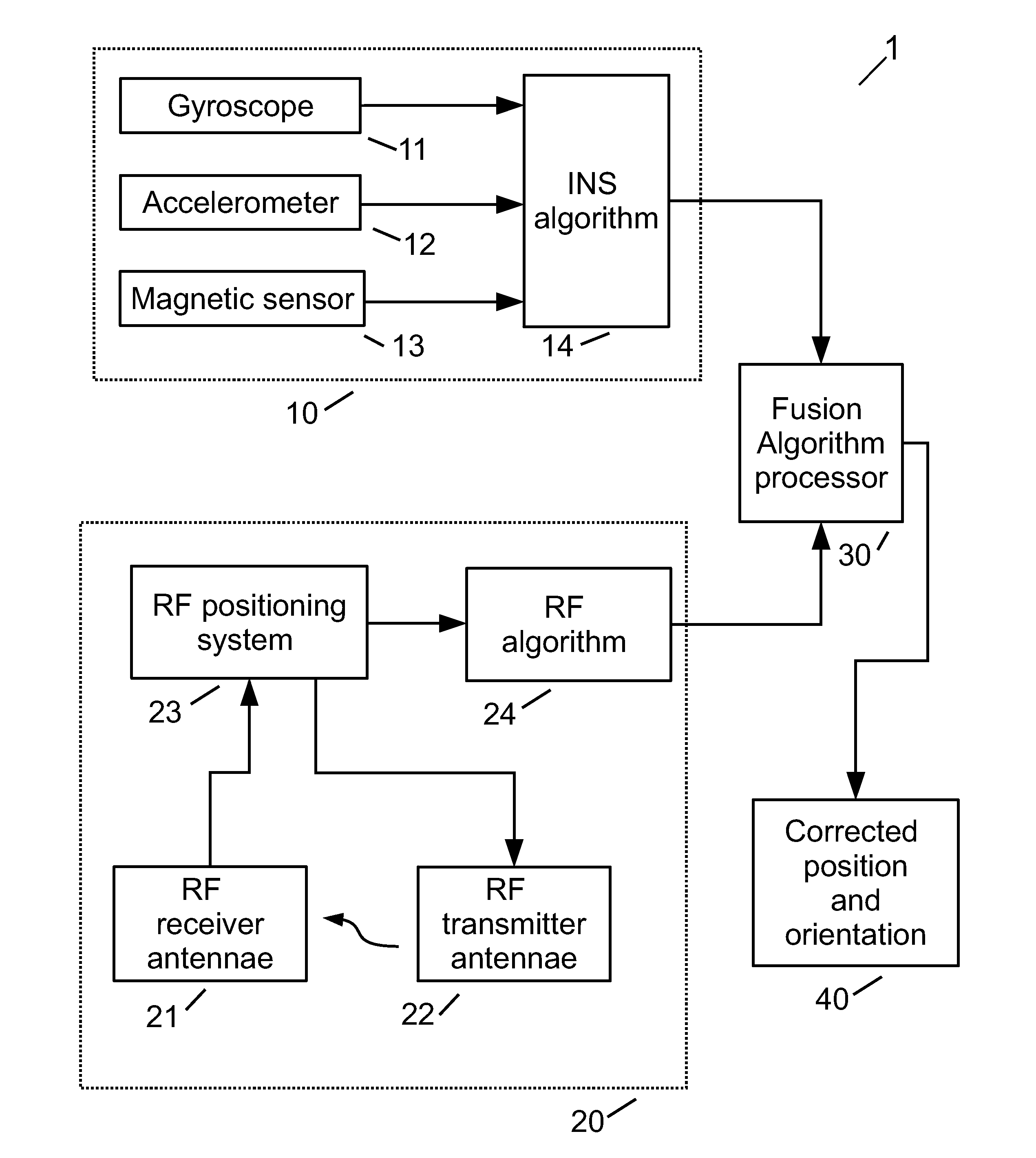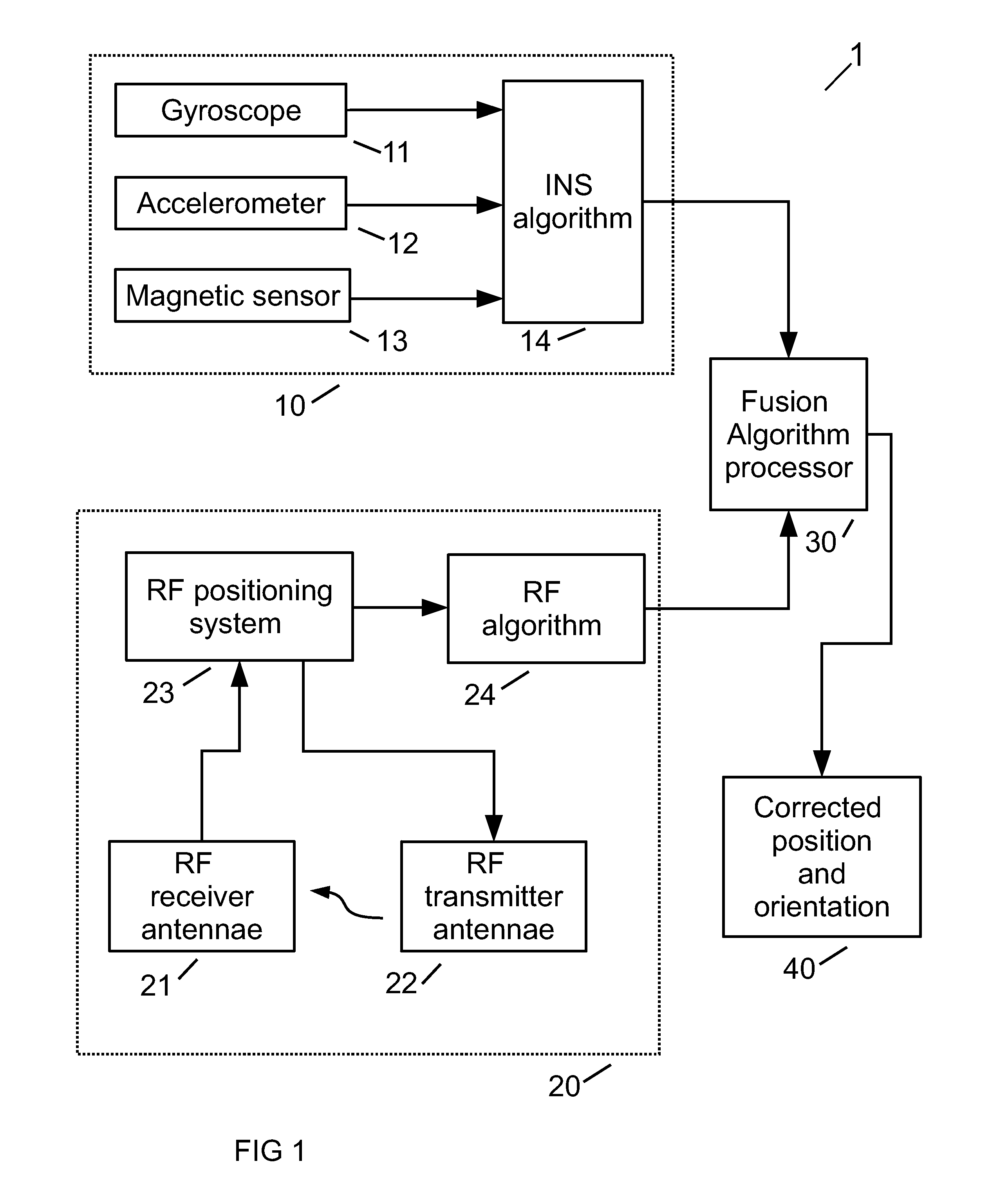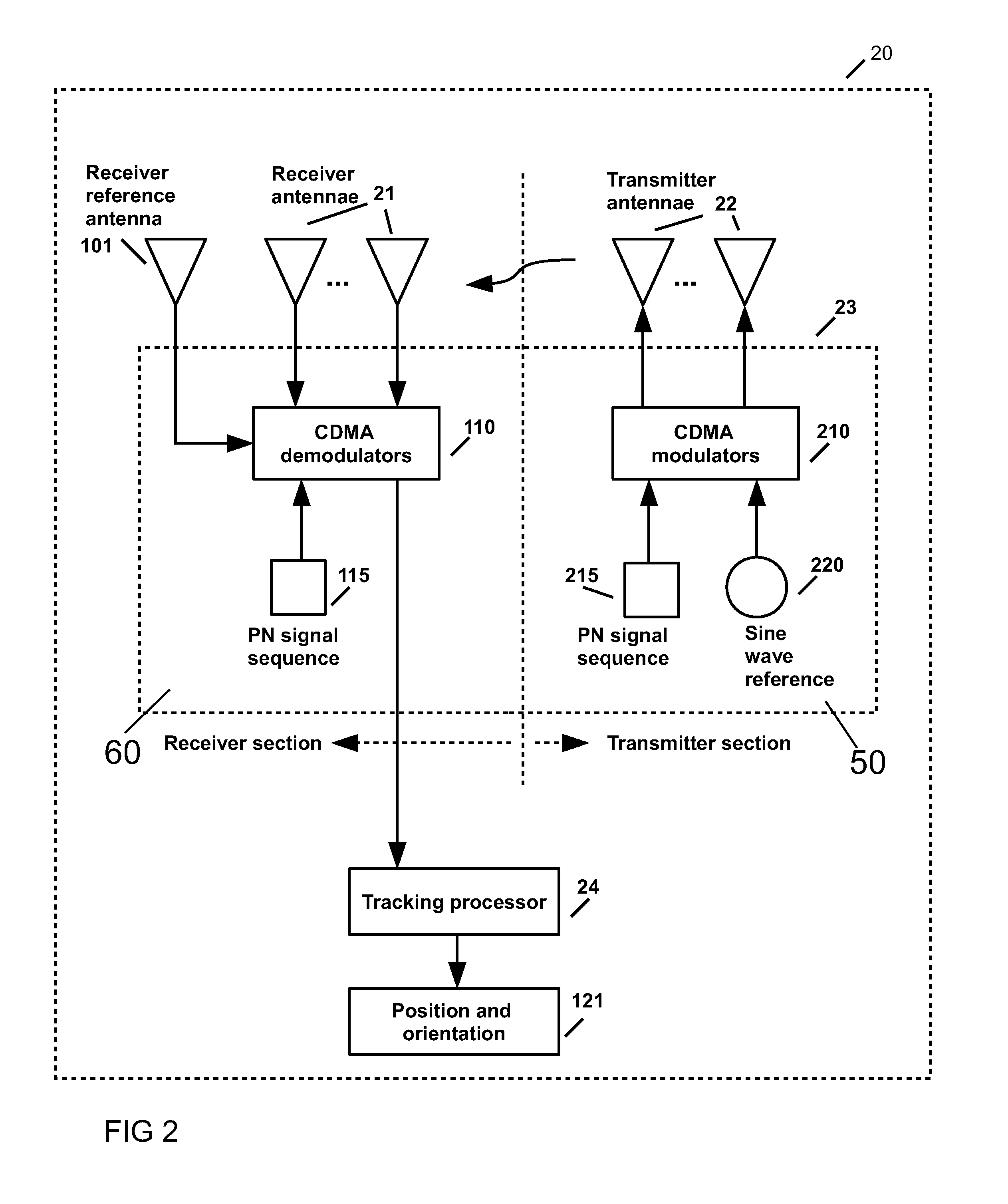Position tracking system and method using radio signals and inertial sensing
a technology of positioning tracking and radio signals, applied in direction finders, navigation instruments, instruments, etc., can solve the problems of gps positioning devices, affecting and requiring an unobstructed view of the sky, so as to improve the stability of mobile devices' rf signals and improve the stability of position solutions
- Summary
- Abstract
- Description
- Claims
- Application Information
AI Technical Summary
Benefits of technology
Problems solved by technology
Method used
Image
Examples
second embodiment
[0059]FIG. 3 represents different approaches to the system 1. When interface 36 is not included, the result is a linearized Kalman filtering approach. When it 36 is there, the result is an extended Kalman filter. Linearized Kalman filters are derived assuming a linearization was performed around the operating point of the filter. Extended Kalman filters utilize non-linear models. Both filters have pros and cons, such as implementation simplicity and speed of processing.
[0060]In this second embodiment, the fusion of RF tracking and inertial tracking is performed in a loosely coupled manner. In loosely-coupled fusion, a link 36 sends the error signal from the Kalman filter 30 is sent to the inertial sensing processor 14 to modify the IMDS 10 output. A feed-forward, complementary filter design, also known as a RF position aided IMDS design, is shown in FIG. 3. Many of the main blocks were already defined in FIG. 1. At the instant at which the GPS measurement is valid, the IMDS state is...
third embodiment
[0062]In a third embodiment shown in FIG. 4, the fusion of RF tracking and inertial tracking is performed in a loosely-coupled manner. As noted above, loosely-coupled fusion is when link 36 sends the error signal from the Kalman filter 30 to the inertial sensing processor 14 to modify the IMDS 10 output. An example of a feed-forward, complementary filter design, also known as a RF range-aided IMDS design, is shown in FIG. 4. Many of the main blocks were already defined in FIGS. 1 and 3. The RF algorithm, however, is now incorporated into Kalman filter 30. Transformation block 35 takes the position solution from the IMDS system 10 and converts it back into range data. Range error is determined in block 31 by subtracting this ranged data from that obtained from RF positioning system 23. This error range data output of block 31 is now used by Kalman filter 30 to compute a position or position and orientation error solution, which in turn, is used to correct output 40 via block 32. This...
PUM
 Login to View More
Login to View More Abstract
Description
Claims
Application Information
 Login to View More
Login to View More - R&D
- Intellectual Property
- Life Sciences
- Materials
- Tech Scout
- Unparalleled Data Quality
- Higher Quality Content
- 60% Fewer Hallucinations
Browse by: Latest US Patents, China's latest patents, Technical Efficacy Thesaurus, Application Domain, Technology Topic, Popular Technical Reports.
© 2025 PatSnap. All rights reserved.Legal|Privacy policy|Modern Slavery Act Transparency Statement|Sitemap|About US| Contact US: help@patsnap.com



